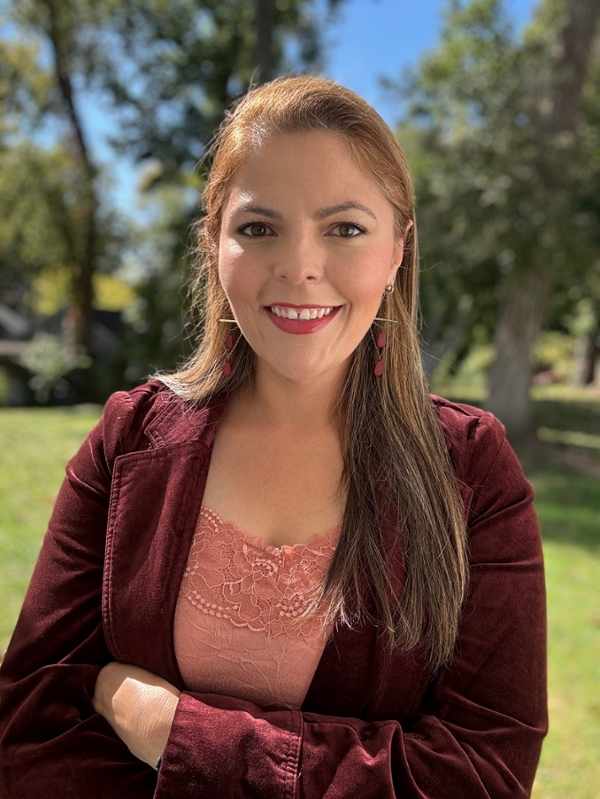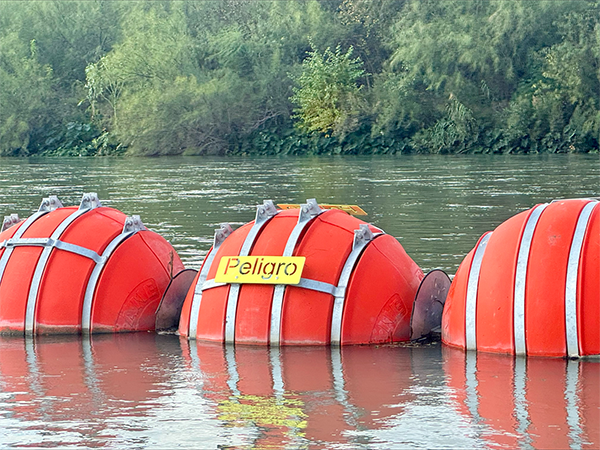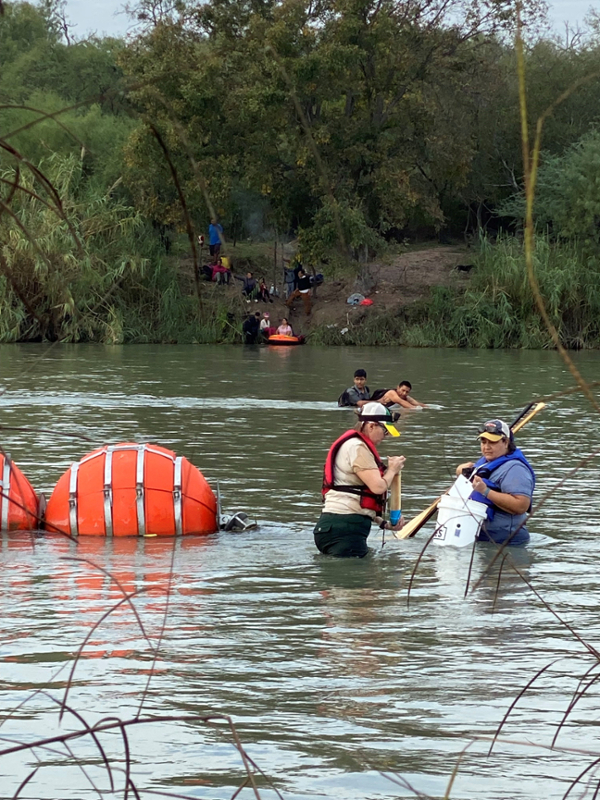SIUE Professor Documents Failed Attempt at Border Militarization
 Along the Rio Grande located at the United States-Mexico border sits Eagle Pass, Tx, hometown of Southern Illinois University Edwardsville’s Adriana Martinez, PhD. Martinez, an associate professor in geography and environmental sciences, has spent years researching the impact of border security, and most recently, the effectiveness of large buoys installed on the river by Texas Governor Greg Abbott. As Martinez captured in a photograph on her recent research trip, migrants traveling to the U.S. have avoided the buoys by heading upstream, easily bypassing the barriers.
Along the Rio Grande located at the United States-Mexico border sits Eagle Pass, Tx, hometown of Southern Illinois University Edwardsville’s Adriana Martinez, PhD. Martinez, an associate professor in geography and environmental sciences, has spent years researching the impact of border security, and most recently, the effectiveness of large buoys installed on the river by Texas Governor Greg Abbott. As Martinez captured in a photograph on her recent research trip, migrants traveling to the U.S. have avoided the buoys by heading upstream, easily bypassing the barriers.
“The whole time we did work, migrants were crossing,” said Martinez. “We saw a group of Venezuelans who had been walking for two months.”
According to Martinez the buoys, which were installed July 10, 2023, present as giant orange balls, stretching 1,000 feet along the river.
“They have razor sharp discs in between the balls. The balls are supposed to spin so the idea is you can’t climb them since they’ll just spin and spin. But that isn’t true. You can climb them,” said Martinez. “They’re supposed to have netting underneath them so you can’t go underneath them, but from what I can tell there is no netting underneath them.”
The price tag for preventing illegal entry into the U.S .by way of these seemingly ineffective buoys: $1 million.
“I grew up with immigrants crossing my parents’ yard. It’s the nature of living and growing up on the border,” said Martinez. “People were living in the town before it was the state of Texas and became the United States.”
Martinez chose to focus on the environmental science of border crossings and began her research in 2008.
“I then began river modeling in 2019 to examine the effectiveness of militarization in addition to the fence.”
This past November while Martinez and her group of volunteers from the Eagle Pass Border Coalition conducted field research, they saw the ineffectiveness of the buoys up close. The team traveled out in boats and took delta measurements, performed sediment sampling and released dye to follow the currents.
“We measured the depth of the water from the bank to the buoys,” said Martinez. “As far as the razor-sharp discs, they are small and avoidable.”
Other deterrents not too far in the distance that remain are concertina wire in several areas--lining the river banks, covering empty train cars, and encasing chain-link fencing.
“With the National Guard troops, the Texas Department of Public Safety and Border Patrol we are a militarized zone now.”
It was during Martinez short trip over the Thanksgiving holiday that news broke of several drownings, which are unfortunately all too common. “Drowning deaths occur when having to cross in more dangerous locations, such as avoiding concertino wire and avoiding buoys.”
Despite the show of strength, there is seemingly one aspect of border security that still needs shoring up: the infrastructure surrounding the processing of asylum seekers. “In half a day we saw more than 50 migrants [ready to cross] and another 100 on the U.S. bank side that had already crossed.”
“In half a day we saw more than 50 migrants [ready to cross] and another 100 on the U.S. bank side that had already crossed.”
Within weeks of the July installation of the buoys, officially known as the “marine floating barrier,” the federal government alleged “that installment of the barrier violated the Rivers and Harbors Appropriation Act of 1899.”
The state appealed.
As of December 1, the United States Court of Appeals for the Fifth Circuit ruled in favor of the U.S., which also claimed the floating barrier disrupted the Rio Grande’s navigability.
A removal order was issued.
The fact that Martinez managed to quickly gather research will prove valuable to future consideration of the lasting human effect.
“Four islands were destroyed during the construction of the buoys. They obliterated vegetation on the islands,” said Martinez. “By tying the buoys to a large series of concrete blocks they are essentially creating a river bar in the middle of the channel that wasn’t there before, changing the flow.”
The possibility of buoys becoming detached also brings the probability of flooding "or they could get detached because of a flood and do damage to bridges, dams or buildings near the river downstream.”
According to Martinez those who work in geography and environmental sciences bring attention to the intersection of humans with the environment and the consequences. She says in the case of the floating barrier, “How humans impact the environment and how the environment impacts humans...this is definitely that. An infrastructure is being created, and migrants are affected by this militarization.”
“It’s important to study what they are doing to the river, so that we know should the buoys be put anywhere else they’re going to have a similar impact.”
Follow Dr. Adriana Martinez on Instagram @ThinkingRiverThoughts.
PHOTOS: Adriana Martinez, PhD, associate professor in geography and environmental sciences; the marine floating barrier (buoys); migrants crossing the Rio Grande while Dr. Martinez and team conduct their research (photo by Paula Allen)










